| Architect |
Santiago
Calatrava |
| Date
Built |
Opened 2005 |
| Location |
City of Arts
and Sciences |
| Description |
|
|
In 1992 Santiago Calatrava received a
commission to develop a 35 hectare site on
the dry bed of the River Turia in
Valencia. The local government wanted
to establish this site between the city
centre and the sea as home to an opera
house, science museum and a planetarium. The
whole complex is known as the Ciutat de les
Arts I les Ciencies or City of Arts and
Sciences. Without question the most
spectacular element of the complex is the
Palau de les Arts Reina Sofia with its
soaring roof. Calatrava's website says that, "In recognition of the civic importance of the Opera House, Calatrava gave the building the iconographic character of a monumental sculpture. In form, the building is a series of apparently random volumes, which become unified through their enclosure within two symmetrical, cut-away concrete shells. These forms are crowned by a sweeping steel sheath, which projects axially from the entrance concourse out over the uppermost contours of the curvilinear envelope. The structure that results defines the identity of the Opera House, dramatically." From one angle the building resembles a huge humback whale breaching out of the water infront of you. 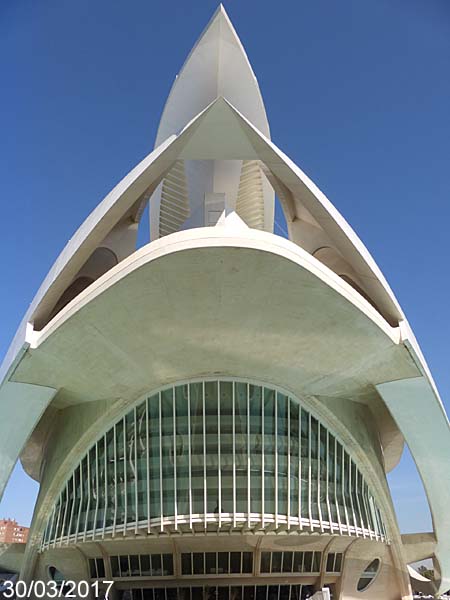 The building, "... is meant to serve as both a major performing arts facility for Valencia and as a dynamic urban landmark, helping to consolidate and animate the area in which it is built. The main components of its program are an auditorium seating 1,706, suitable for opera productions as well as concerts and ballet;" 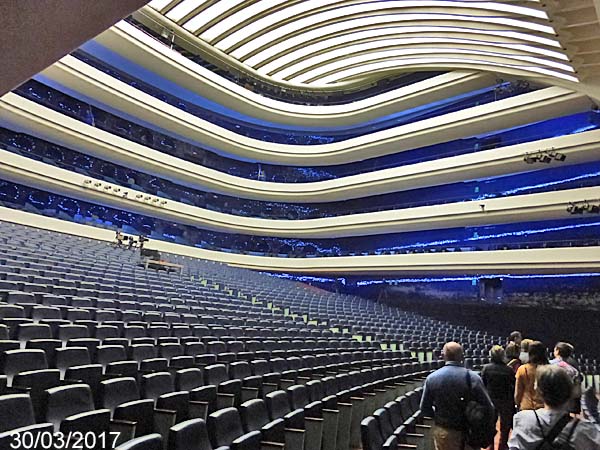   The hall incorporates many structural features designed to foster the best accoustic results including these unusual tiled walls that are rippled is places.... 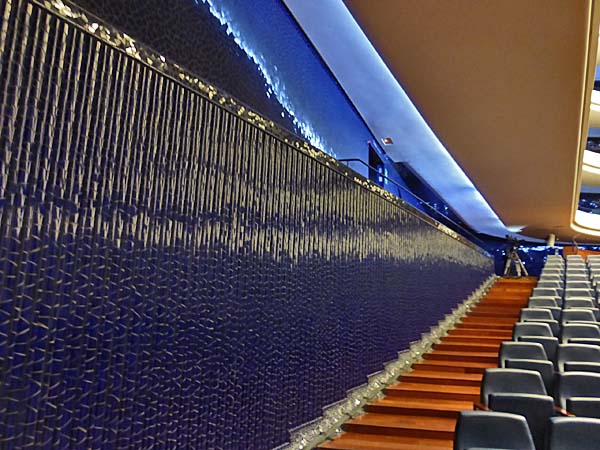 ... and undulating
in others.
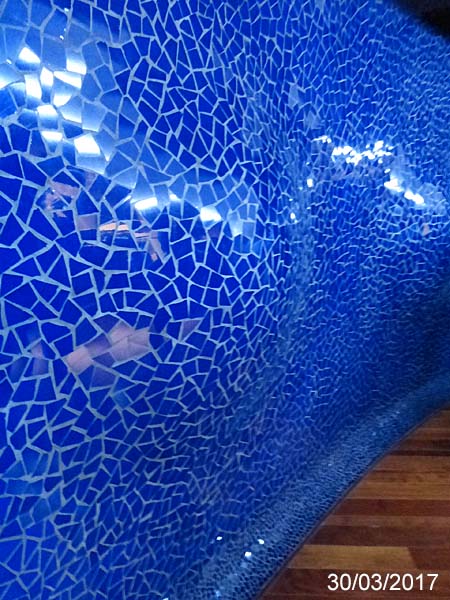 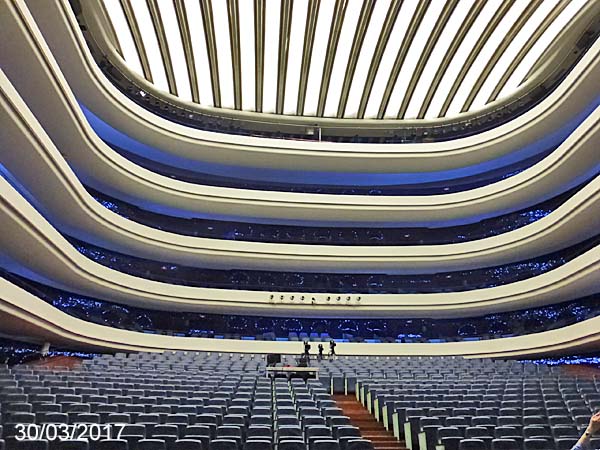 The seats have screens in their backs so that members of the audience at operas can receive simultaneous translation in Spanish or Valencian. 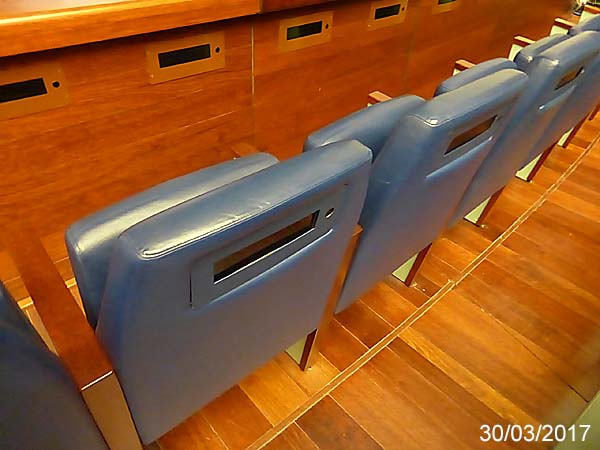 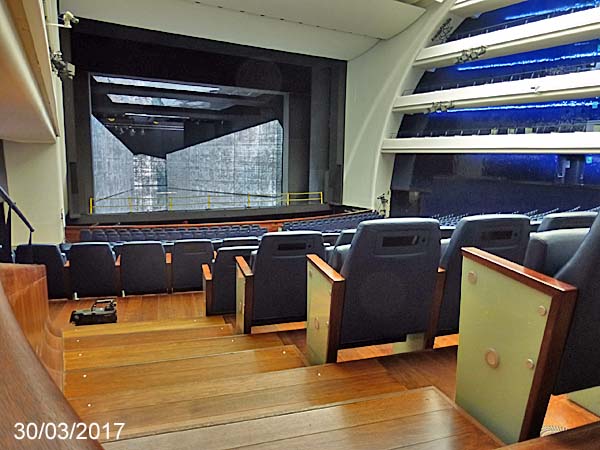 There is also an auditorium with a capacity of 1,490 equipped with advanced film and video projection systems, offering the possibility of viewing performances on special video screens. 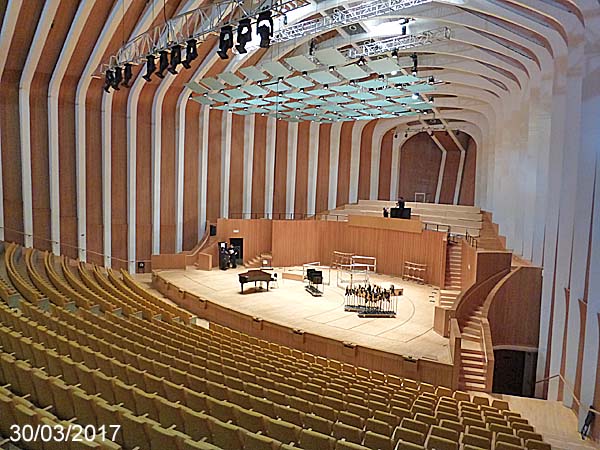 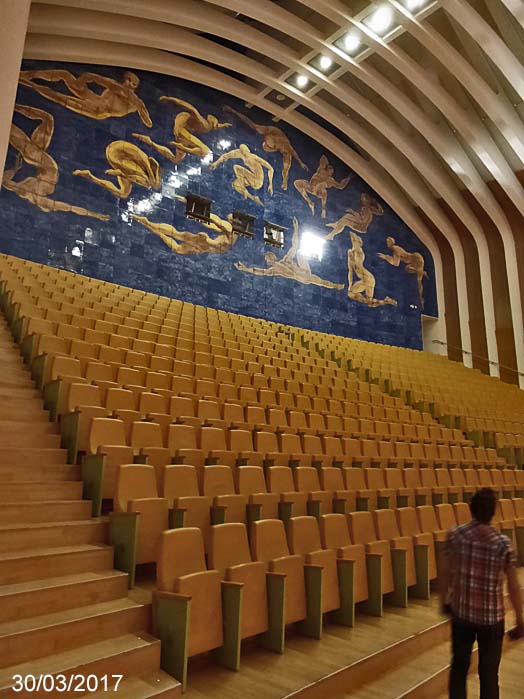 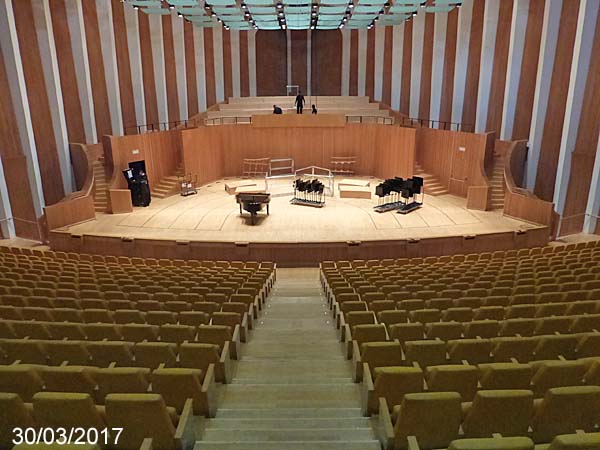  There is also a
380-seat chamber music hall for
ensemble performances, drama and other
events.
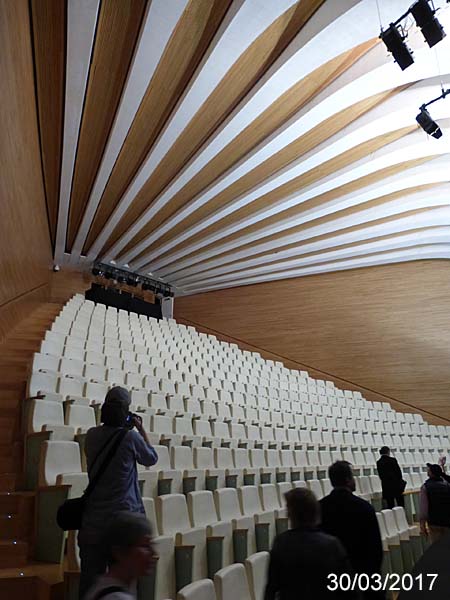  In all there are four halls of varying sizes and nearby a fifth, a 400-seat auditorium for experimental theater and dance, with gallery space for exhibitions of fine arts and decorative arts. *******************************
More views of the building. 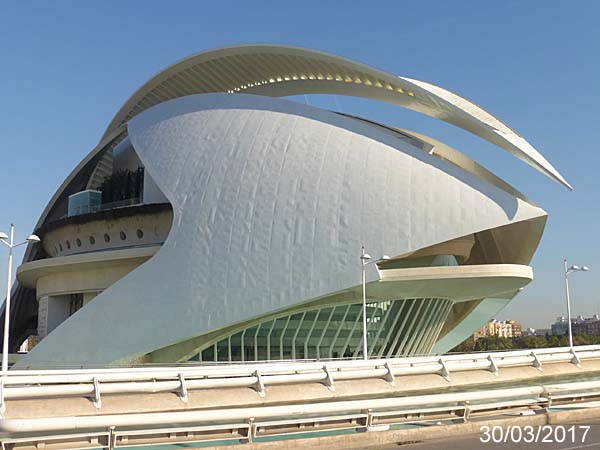 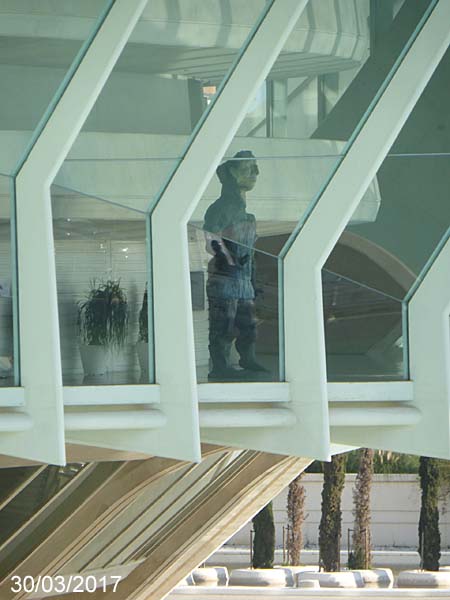  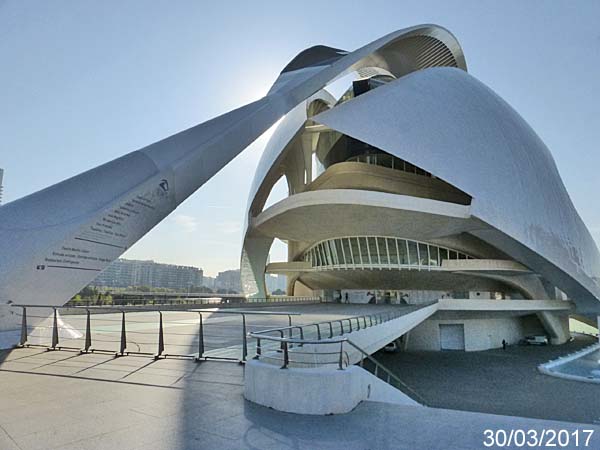 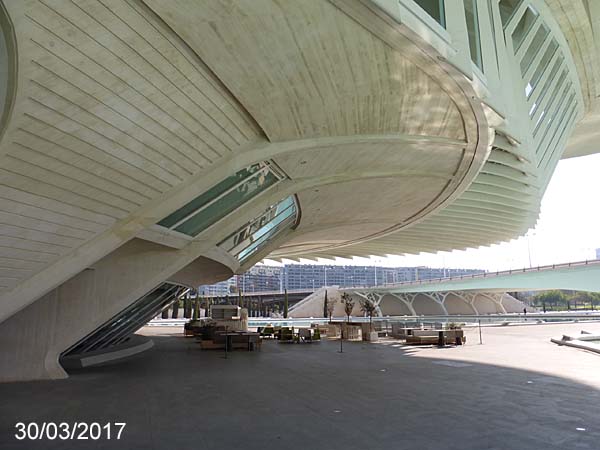 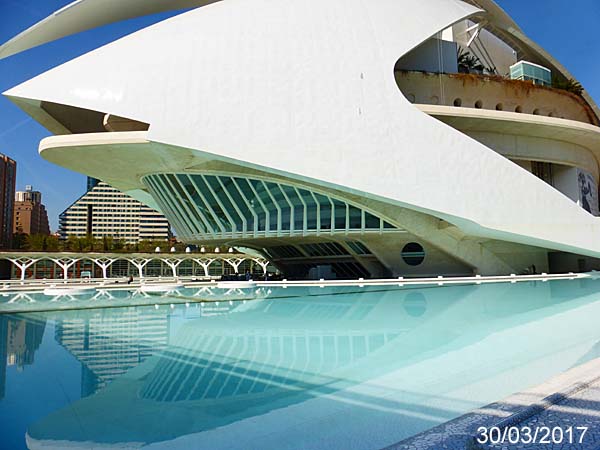  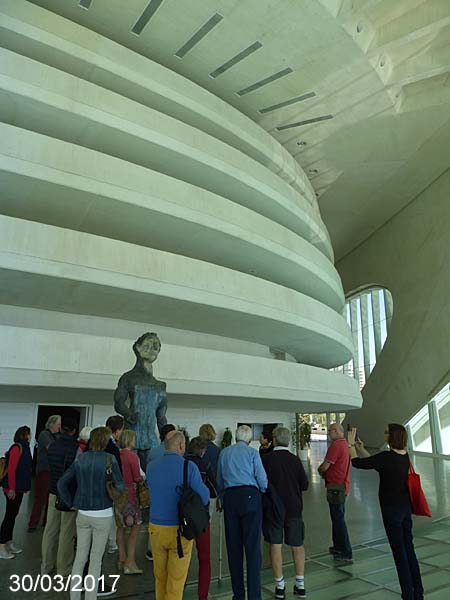  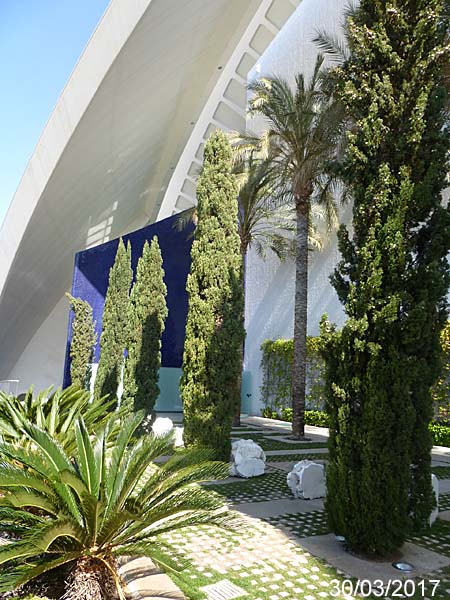 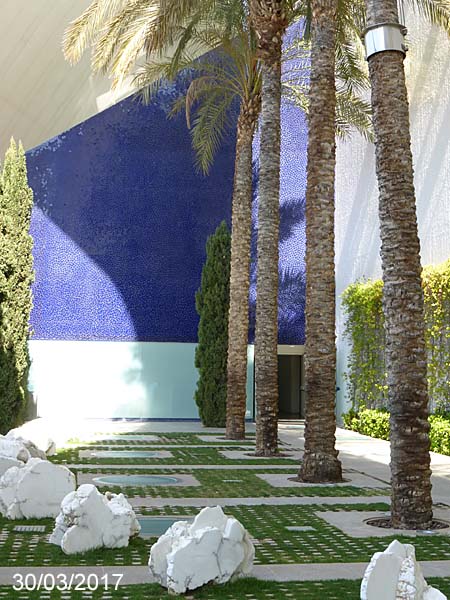 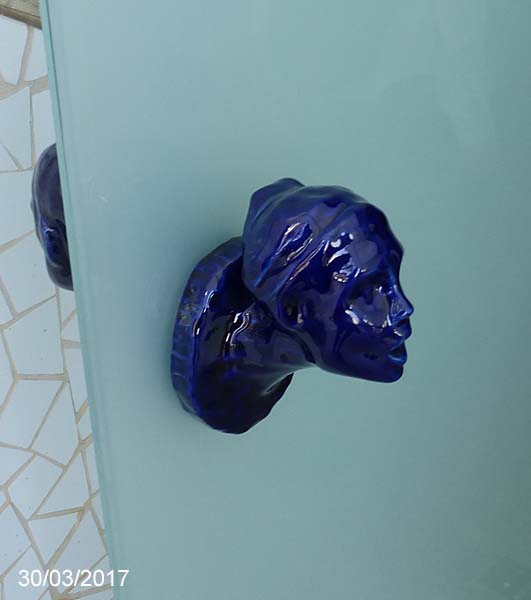 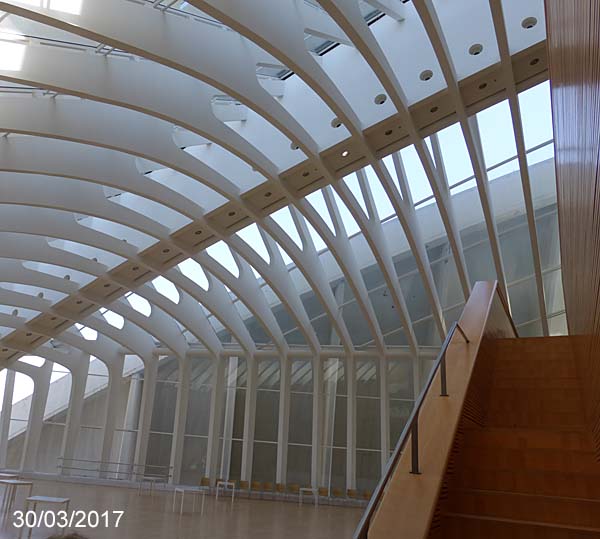 It would be remiss in
discussing this wonderful building to
not comment on the fact that it has been
the centre of controversy and legal
action. As the Guardian pointed
out in May of 2014, "... The
complex has had structural problems
in recent years, including a leaky
concert hall roof. In December the
hall was fenced off and closed for
two months, after high winds blew
chunks of the intricate mosaic off
the building .... from an original
budget of €300m, the cost of the
dazzling complex – which includes a
concert hall, opera house,
planetarium and science museum among
its many features – swelled to more
than €1bn by the time it was
completed in 2005."
|
|
|
Palau de
les Arts Reina Sofia, Valencia, Spain
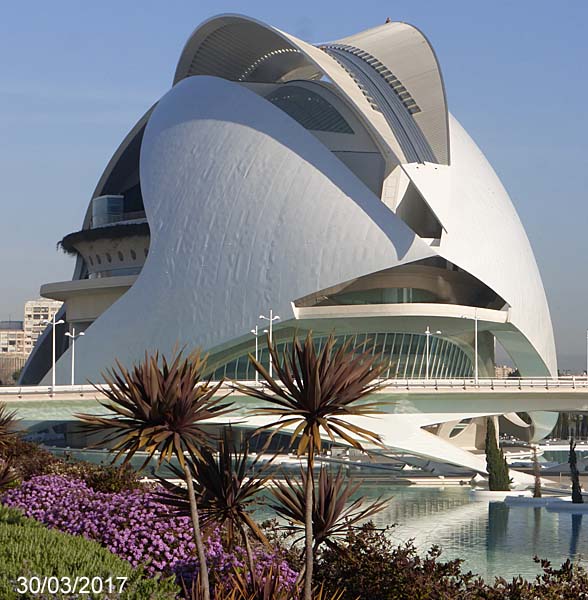 |
